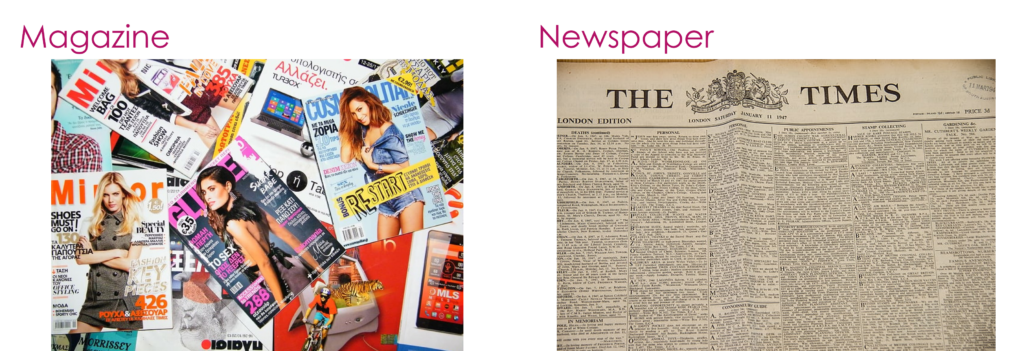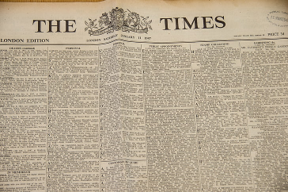Writing a scientific grant proposal is REALLY HARD, especially because the grant writing mindset is very different from that of writing a research paper.
Luckily, I find that for many writers, getting into the correct mindset and keeping the reader in mind can help fix many of the common mistakes in grant writing.
So, here we’re going to discuss how to think about your grant, the differences between grant proposals and reserach papers, who reviews grants, and what the grant review process looks like.
The simple mindset shift provided here can make a huge difference in how your proposal is crafted, written, and edited, so get ready to improve your proposals!
Prefer a video on adjusting your grant writing mindset?
Great – we’ve got you covered –
How should you think of a grant proposal?
I present this graphic at the beginning of every workshop, and ask attendees how they should think of a grant proposal. What do you think?
Should you think about a grant proposal more like a magazine or a newspaper?

I tend to see about a 50/50 split, with half of attendees thinking of it as a magazine and half as a newspaper.
But…regardless, of what you thought before this post, I now want to see you thinking of your grant as a MAGAZINE and not a newspaper.
Let’s break down why…
Solve many proposal issues with this grant writing mindset shift
Magazine

- Reader is NOT SEEKING the info
- Won’t make reader an expert in the topic
- Designed to interest a reader, hold their attention, and ultimately, SELL your proposal
- Burden on WRITER (YOU!)
- Uses spacing, images, color, and formatting to keep the reader interested
- “Easy” reading
Newspaper

- Reader is INHERENTLY INTERESTED in info
- Fairly comprehensive in specific topic
- Designed to provide the reader as much information as possible
- Burden on READER
- Uses densely packed text to provide facts and details to inform an interested reader
- Can be dense/challenging reading
Grant reviewer is not seeking the info – so don’t aim for comprehensive
When someone opens your reserach paper, they are typically doing it to learn more about this specific topic, and it makes sense to make the paper a fairly comprehensive overview of your specific reserach project.
However, NO ONE who reads your grant will ever do it to become an expert in this topic.
Your grant will be read for one reason, and one reason alone – to decide if you will get money to work on it.
So we need to shift away from thinking that our reader is ACTIVELY SEEKING this info, as they are not. They are instead actively seeking the information they are looking for to properly judge your grant.
This means that when we are writing, we need to focus less on including details and teaching a reviewer everything about our topic, and instead make the points they will look for when evaluating and scoring our grant easy to find and clear.
We aren’t making experts here. We’re writing a sales pitch.
Grant writing mindset – shift to writing to SELL instead of just INFORM
The end of the last point led right into this one – whereas a newspaper or research paper is designed to inform, that isn’t the job of our grant proposal.
Our grant is written to SELL our research to a panel of reviewers.
This means we need to focus less on things we get hung up on in science:
- big words
- abbreviations
- technical descriptions
- in-depth literature reviews
- complex phrasing and wording
- etc.
We have done our job with a grant proposal if the details fall to the background here when a reviewer is reading it. We don’t want them to have to study our grant and learn more about our field to judge our proposal (hint – they won’t).
Our proposal needs to INTEREST a reviewer, HOLD their attention, and CONVINCE them that this science is worth funding.
That comes with a fundamentally different mindset than writing to inform on a topic.
In the end, is it NOT the reviewer’s job to learn your science, and the more you require them to do that, the less likely you are to be successful.
Burden here is on WRITER and not on READER
Whereas to get the most out of a newspaper (or reserach paper), it is the job of the reader to do some of the heavy lifting for understanding the work and science.
HOWEVER, this is no longer the case for a grant proposal.
Here, it must be such that the reader can read through the proposal and generally understand very quickly, even if they are not an expert in your field.
This makes it YOUR burden to write in such a way that the proposal is simple and easy to understand while still conveying all of the information necessary to make a proper judgement.
If it sounds hard, that’s because it is.
It is a skill to be able to write in such a way that complex concepts are boiled down to their key components and are written in such a way as to be generally understandable to non-expert scientists.
BUT, this is a skill that a grant writer must learn, because relying on the grant reviewer to study your work enough to make sense of a complex text is a sure-fire path to disappointment.
Take advantage of formatting
While most reserach papers look the same – paragraphs of unformatted text with figures and tables interspersed – there is a lot more freedom in the structure of a grant proposal.
Your grant proposal CAN and SHOULD contain plenty of text formatting, from bold, italics, and underlining to highlight key points, short paragraphs with spacing, plenty of subheadings, and even more elaborate formatting like colored or highlighted text to really hammer home the key points.
I recommend having NO PAGE of a grant without formatting.
Consider using:
- bold
- italics
- underline
- colored text
- highlighted text
- white space
- subheadings
- figures
- tables
Use formatting to make certain things stand out:
- specific aims
- existing gaps in the field
- impacts
- make techniques or experiments stand out
- highlight items in a list
- in general – ANYTHING they will be specifically looking for in your grant:
- broader impacts
- interdisciplinary aspects
- role of each investigator
- etc.
Overall, use formatting to make it IMPOSSIBLE for the reader to miss your key points.
Write those points in a clear statement (i.e., “The broader impacts of this proposed work are…”), and then use formatting to make it such that the reviewer CANNOT miss that statement.
Make it easy reading
When are you in the mood to read a magazine versus a newspaper? What are you looking for in each?
When we pick up a newspaper, we usually settle ourselves in to really dig into the text and focus and pay attention to each point.
However, we can’t guarantee our grant reviewer has the luxury of focused attention when reading our grant.
We need to make scoring our grant proposal as easy as flipping through a magazine.
We need colors and white spaces and bold text to draw attention to the stuff we really want them to know.
We want big blocks of text broken up into easily digestible chunks.
NOTHING about a grant proposal should look intimidating (think about turning a page of a paper to a solid block of text…yikes).
Our proposal needs to be EASY reading to ensure the best chance of the reviewer locating what they need to know and being able to digest it, even if they aren’t completely focused.
Therefore, we need to adjust our grant writing mindset to ensure we are giving our reviewer something they want to read instead of just what we want to tell them.
Who are grant reviewers?
Well, first, it may seem silly to want to specify it, but we need to, so here it goes…
Your grant reviewers, first and foremost, are PEOPLE.
They are not computers, robots, or machines of any variety, and they have all the same attention spans, failings, and human tendencies as the rest of us.
And, even worse, our grant reviewers are BUSY PEOPLE.
Grant reviewers mostly have full-time jobs outside of reviewing grants, often in academia, so yeah, just take a guess at how much spare time they have.

So ON TOP OF reviewing a stack of grant proposals, your reviewers are working full time, have families, are raising children and pets, and sometimes like to engage in hobbies in addition to all of those things.
Phew, that’s a lot, right?
So as much as in an ideal world, our grants would be studied and analyzed for the best science and best chances of success, that’s just not how it works in the real world.
So we need to adjust our grant writing mindset in a few key ways:
- Make our grant as easy to read as possible
- Think of what WE’D want to read if we added grant reviews to our responsibilities
- Write for people who might need to be picking it up and putting it back down…over and over…
- Short paragraphs
- Spacing
- Subheadings that indicate ALL key points
- Formatted text to make key points IMPOSSIBLE to miss
- Not give reasons to throw out our grant without scoring
- Not following instructions
- Ignoring formatting rules
- Shrinking our line spacing
- Every year, I have a grant writer who thinks they are the first person to think of shrinking line spacing to fit more lines. They are not… Even worse, your reviewer WILL notice and this WILL get your grant thrown out.
What does the grant review process look like?
Many writers don’t actually know what the grant review process looks like, which is a shame since it can be so helpful in understanding how our grants our scored AND how our grant writing mindset is formed.
So, let’s review this…
- Grants are reviewed by a panel or committee, who split the grants amongst themselves.
–> This means that not every grant is read by every committee member.
- These committee members will be scientists and experts in their field, but their field is likely NOT the same as yours.
-> so we need to write to SCIENTISTS, but not EXPERTS in our field
The reviewers who DO read your grant are reading a stack of them. This means a few things:
- Reviewers read grants in their own time and can only spend so much time per grant
-> Usually 90-120 minutes per grant. This is NOT A LOT.
- Reviewers will sort grants according to more or less likely to be funded based on the cover page (summary, specific aims page, etc.) in order to spend the most times on the ones with the best chance.
–> So it is IMPERATIVE that our first page is solid to get into that GOOD pile
- The review committee will meet to discuss the grants and decide on which are put forward for funding.
-> So we need our reviewer to GO TO BAT or STAND UP FOR our grant in this meeting
-> This is also why it is SO important to have easy-to-find headings and highlighted key points – make it EASY to scan your grant for this key info in a roundtable discussion.
So, hopefully knowing a bit more about this review process can help get you into the right grant writing mindset.
Need a bit more?
Check out the links below or reach out to me through email or social media
More info for improving your grant writing mindset
Want more specifics or more information in general on writing your grant?
Check out this post on the Biggest Mistakes I see in Grant Proposals:
Or, sign up to attend a grant writing workshop:
